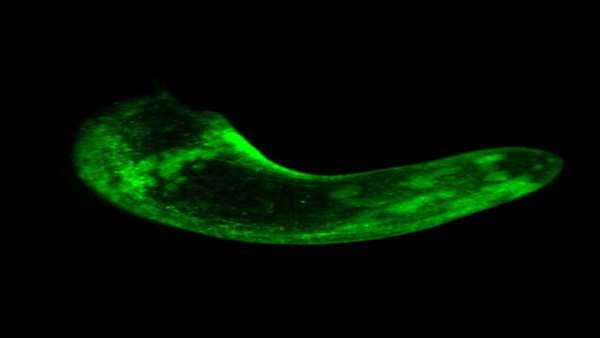Of all the miracles of life that biology endeavors to explore, regeneration is at least among the top three.
With its voracious appetite for live prey, you could think of the three-banded panther worm, Hofstenia miamia, as a rice-sized monster. It is one of the greatest whole-body regenerators. Learning how this tiny worm can pull off such a feat could be key to discovering new ways of treating diseases and injuries.
The authors devised a method for microinjecting fluorescent genes into embryonic cells to generate transgenic worms whose skin (epidermis), gut, and muscles glow red or green under ultraviolet light.
The authors showed that specific cell types can be isolated from this worm using these fluorescent markers, making studies on regeneration mechanisms possible through the tracking of photoconvertible molecules and live-cell imaging. The ability to make individual cells glow allowed the researchers to visualize the location, development, movement, division, and interaction of cells with each other, in the search for clues as to how they work together to orchestrate regeneration.
Precise genetic manipulation in the three-banded panther worm enabled researchers to switch off selected genes, disrupting the model organism’s built-in regenerative program. This can help researchers identify genes important for whole-body regeneration and their specific functions in the complex process.
Using the transgenic worms, the authors showed how muscle fibers in the worm connect to each other and to cells in the skin and the gut. Extensions from muscle cells interlock in tight columns and form a grid that offers the worm structure and support, much like a skeleton, the researchers observed.




ارسال به دوستان